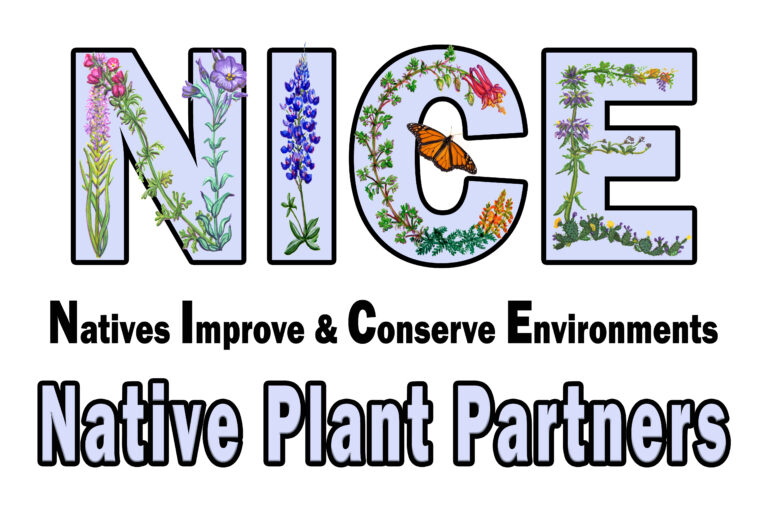
“NICE Native Plant Partners” is collaboration between the Native Plant Society of Texas and local nurseries to offer natives that are right for our local environment. Participating nurseries feature our chosen plant of the season with provided displays and an information sheet with care and planting instructions.
“Natives Improve and Conserve Environments” goals are to introduce and encourage the use of beautiful and durable native plants in our landscapes. Native plants, once established, save time and money by significantly reducing or eliminating the need for fertilizers, pesticides, water, and lawn maintenance equipment. Native plants provide food and habitat for birds, butterflies, bees, and other wildlife.
Allow us to introduce you to the spectacular beauty of native plants. Call or visit one of our participating nurseries listed below to ask about the plant of the season.

